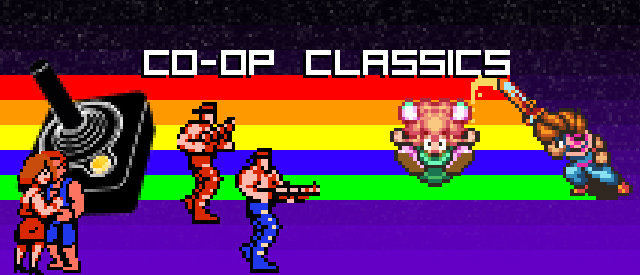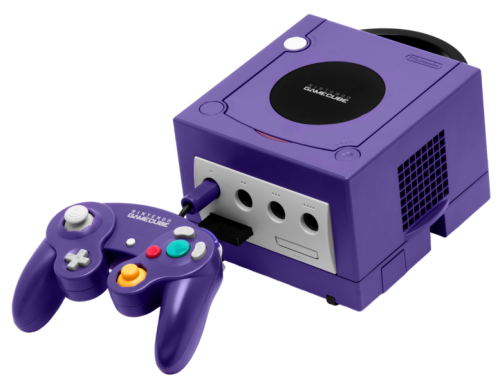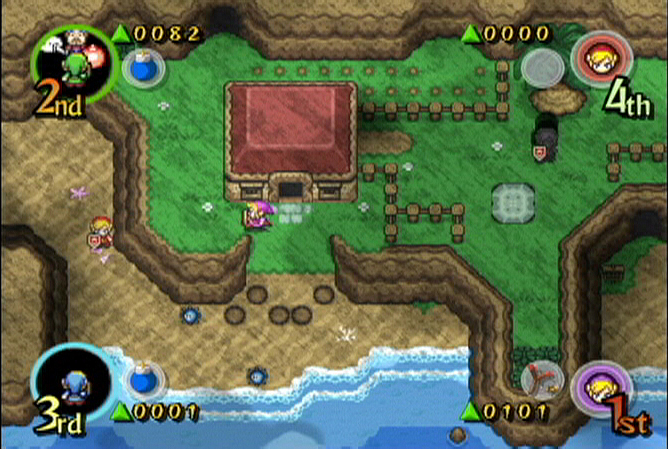

Today, we continue our look back at two video game consoles released one decade ago. Last week, we covered Microsoft's first console, the Xbox, and its most notable innovation to co-op, online play through Xbox Live. But the Xbox wasn't the only console to arrive in stores in time for the holiday shopping season in 2001. NIntendo's GameCube hit the shelves on November 18 of that year, and brought some excellent cooperative experiences to gamers that were unavailable on any other system.
Nintendo's role in video game history can't really be understated. After the Atari-fueled Golden Age of the late 70s and early 80s, the market collapsed in 1983. It was a dark time for video game consoles, until the arrival of the NES in 1985. Almost single handedly, Nintendo's first system reinvigorated the home gaming scene, and began a new era of classic gaming. The first NES follow-up, the Super Nintendo, was almost as popular as its predecessor, but the Nintendo 64, released in 1996, wasn't nearly as successful. Five years later, Nintendo debuted the GameCube.

The GameCube was a powerful system, capable of graphics that surpassed the market-leading Playstation 2 and rivaling those of the Xbox. Fans of having more than two-person multiplayer enjoyed the system's four built-in controller ports. The controller itself was a more natural feeling upgrade to the innovative but awkward Nintendo 64 unit, with built in force feedback. The launch version of the console was an odd purple color, though other colors came out later on. The GameCube was also Nintendo's first console to use disc-based media for games.
It was Nintendo's choice of media, proprietary miniDVD, that gave it a distinct disadvantage compared to the PS2 and Xbox. The GameCube couldn't play DVD movies like its peers could, and this tipped the scales against Nintendo's console as DVD adoption spread like wildfire. This, along with the inexplicable carrying handle and "preschool" color, gave the GameCube a bit of a bad reputation among gamers. But there was no denying the strength of the software for Nintendo's fourth-generation console.

Nintendo's library of franchise video game characters is unmatched. Mario platformers and the Zelda adventure series are perennial favorites regardless of what system they are released on. While Super Mario Sunshine and The Wind Waker may have been disappointing in some respects, the first-person revamp of the Metroid series more than made up for it. Samus Aran's makeover in Metroid Prime was an undisputed system seller. Unfortunately, none of these games included co-op. Fans of co-op in the popular Nintendo franchises would have to wait a few years into the GameCube's lifespan.
As the GameCube aged, all manner of quirky, experimental titles were developed for it. Perhaps the best of these, from a co-op point of view, was the GameCube/Game Boy Advance cable. This cable allowed the Game Boy Advance to connect to the GameCube as a controller with a secondary screen. The Legend of Zelda: Four Swords Adventures took this concept and ran with it. Adapting and enhancing the side adventure from the Link to the Past GBA port, Four Swords Adventures was brilliant, with four different Links working together on a quest through two worlds. Teamwork and special formations were essential to solving puzzles and overcoming boss fights. It's one of the better co-op games I've ever played, and now that it's available (free!) for the 3DS, there's no excuse not to enjoy this gem.
But Link wasn't be the only Nintendo star to embrace co-op on the GameCube with an odd accessory. Donkey Konga, with its bongo-shaped controllers, allowed two-player co-op in story mode, or up to four in song mode. This was in the prehistory of the music game genre, before even the first Guitar Hero was released. The intuitive control scheme was very easy to learn, even for non-gamers. Though it didn't require any special equipment, Mario Kart Double Dash!! allowed co-op in a racing game, which is unusual enough. One player could drive while the other used items to disrupt the other racers. The implementation wasn't ideal for veteran gamers, but it was a precursor to the young player-friendly co-op in Super Mario Galaxy and other similar titles.
Sadly, in the previous gen console wars, the GameCube came in a distant third, behind Sony's Playstation 2 and the Xbox. Third party support wasn't nearly as strong for Nintendo's purple lunchbox, which was undoubtedly a factor. However, Nintendo's success with games like Four Swords Adventures and Donkey Konga would lead them to think far outside the box with the GameCube's follow-up, the Wii. That system would build on all the casual-player friendliness of the GameCube and head to the top of the sales charts. Perhaps the GameCube wasn't a financial gold mine, but it paved the way for the Wii, which made Nintendo relevant to the video game industry once again.